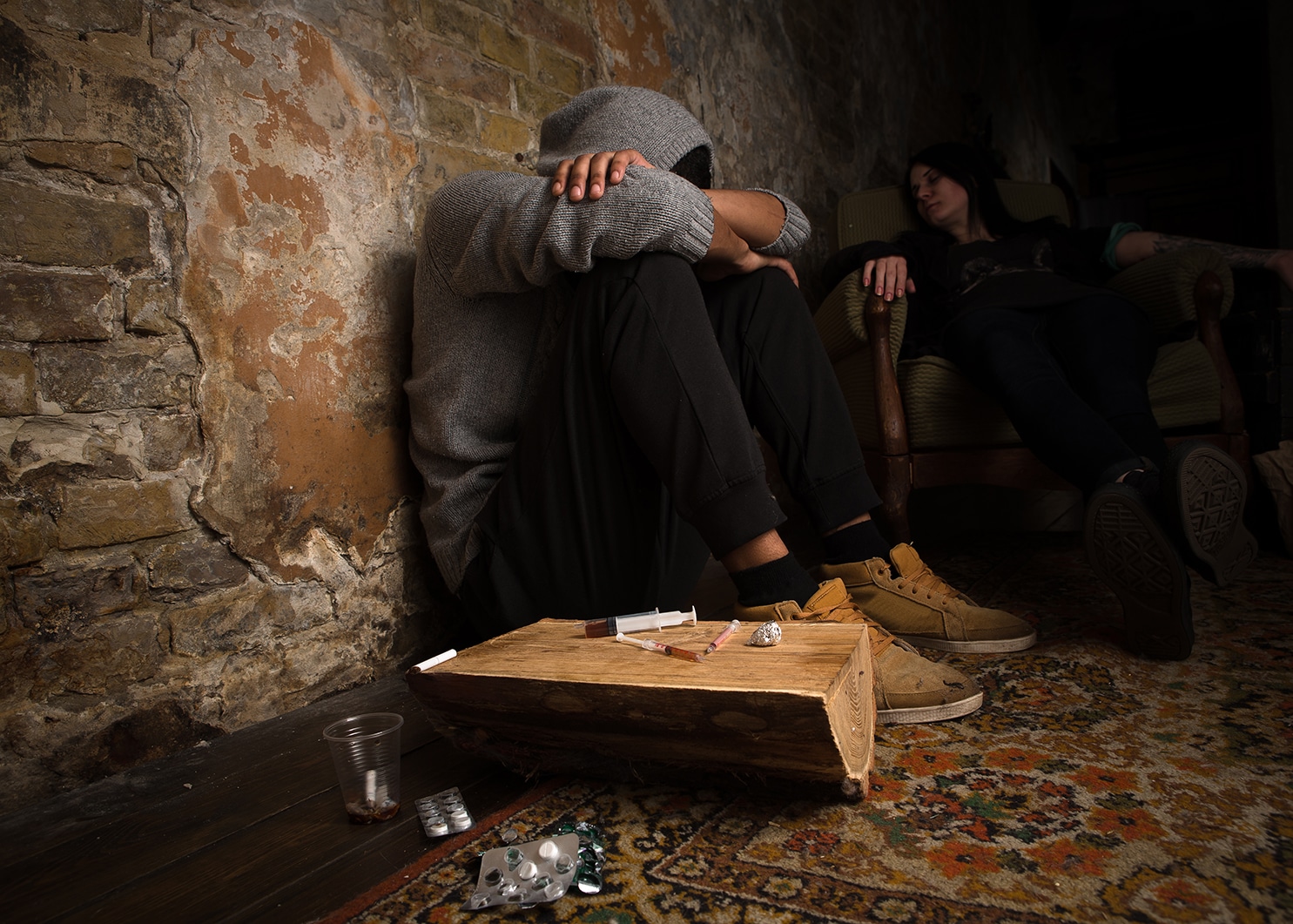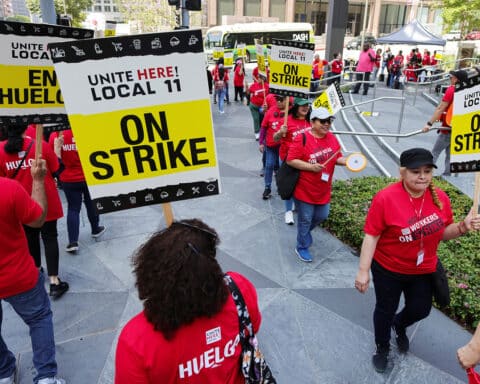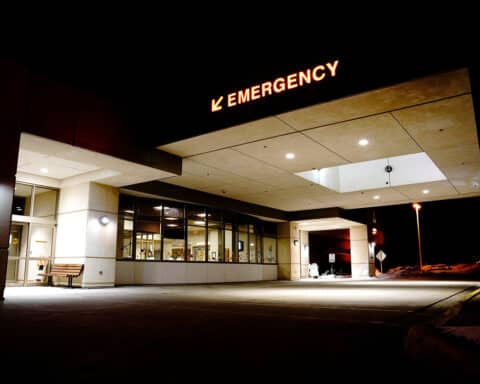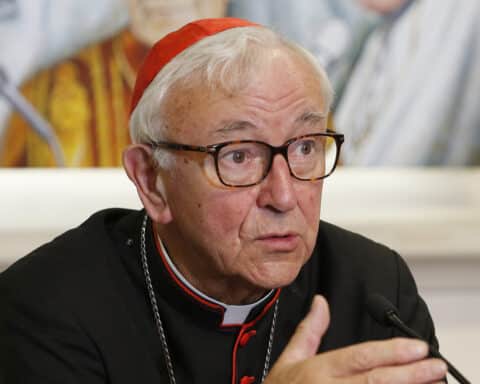(OSV News) — When 58.5% of Oregon voters passed Measure 110 in 2020 — America’s first law decriminalizing possession of small amounts of cocaine, fentanyl, heroin and methamphetamines — the intent was to emphasize treatment over incarceration. Funds consumed by enforcing laws previously banning such illicit substances would instead be directed to curing addictions.
The law took effect in February 2021.
But three years later, a nationwide surge in fentanyl use has collided with Measure 110’s legalized tolerance to create a perfect storm of overburdened social services, policing and community dynamics. Officials and citizens alike are rethinking the audacious experiment.
Indeed, the situation has become so extreme that Oregon Gov. Tina Kotek on Jan. 30 joined Multnomah County and Portland city leaders to declare a 90-day tri-government state of emergency.
“Our country and our state have never seen a drug this deadly and addictive, and all are grappling with how to respond,” Kotek said in a press statement. “The next 90 days will yield unprecedented collaboration and focused resources targeting fentanyl and provide a roadmap for next steps.”
‘A crisis of abuse’
For Catholic ministries and parishes in Portland, the impact has been intense as they cope with offering the healing love of Christ to the overwhelmed city.
“It’s a crisis of abuse out there,” Ed Langlois, communications director for Catholic Charities of Oregon, headquartered in Portland, told OSV News. “My wife and I went to dinner in downtown Portland recently and saw a man outside the restaurant window smoking a substance he was heating up on foil. He stood there and smoked for about 10 minutes,” Langlois recalled. “All we could do was try to enjoy our pasta. But watching that man poison himself really gave us pause.”
Studies disagree about Measure 110’s impact.
A study from the Journal of Health Economics cites a 23% increase in “unintentional drug overdose deaths,” while a Brown University report stated, “After adjusting for the rapid escalation of fentanyl … analysis found no association between (Measure 110) and fatal drug overdose rates.”
An additional study from New York University’s Grossman School of Medicine echoed Brown University’s conclusion. “Overdoses went up basically everywhere,” senior investigator Corey Davis told Oregon Public Broadcasting. “What didn’t happen is that they didn’t seem to go up more in Oregon after Measure 110 went into effect.”
Still, Langlois’ front-line experience offers an immediate perspective.
“The decriminalization measure arrived at about the same time as an influx of fentanyl in our region, so it’s hard to lay the blame totally on the law,” explained Langlois. Nonetheless, “we can clearly say that in the last three years that we have seen a significant increase in drug use when our outreach workers go out onto the streets,” he said. “Put briefly, there is more drug use now than we ever remember.”
A lack of treatment
Increased drug use, Langlois noted, also has brought increased violence and other dangers.
Heightened addiction has been apparent “among some of the low-income people linked to our programs, including housing,” he said. “We now send larger groups of outreach workers out and have a strict protocol to make sure they don’t get tangled up in anything untoward. Their bravery is pretty inspiring.”
The frantic, life-saving efforts of drug-related emergencies require steady staff nerves.
“In 2019, Oregon had 300 drug overdose deaths. Three years later, it was 1,000. We keep Narcan on hand here,” said Langlois, referring to a medication used to treat opioid overdoses. “More so than the decriminalization measure, a lack of treatment fuels the drug use crisis we see playing out before our eyes,” Langlois explained.
People who are homeless and trapped in addiction are a particular challenge. While attempting to immediately house them — as Portland has through its Safe Rest Villages’ tiny homes — gets them off the streets, it also “comes with the challenge of managing residents who may be active drug users. That takes more funding and more workers, resources few agencies have,” Langlois said.
‘A retreat from reason’
“The legalization of recreational drugs points to a general trend of allowing people to shape their own reality,” said theologian R. Jared Staudt, former visiting associate professor at the Augustine Institute and current content director of Exodus 90, a Catholic spiritual exercise app and community for men.
“It’s a retreat from reason and a proper spiritual order toward God and the common good of society. Frankly, I find it bizarre that we would do everything we can to end cigarette smoking and then begin allowing recreational drugs, which make a far more significant impact on health, including the brain,” Staudt told OSV News. “It’s as if we want to see how far we can push things until they explode. Looking around, we might wonder if we are crossing that line.”
The Catechism of the Catholic Church is explicit concerning drug use, noting that with the exception of “strictly therapeutic grounds,” it is a “grave offense” that inflicts “very grave damage on human health and life.”
Pope Francis, too, has had strong words, calling drug addiction an evil “and with evil there can be no yielding or compromise.”
“Attempts, however limited, to legalize so-called ‘recreational drugs,’ are not only highly questionable from a legislative standpoint, but they fail to produce the desired effects,” the pontiff said in a 2014 address to the International Drug Enforcement Conference in Rome.
Violent crime
In Portland’s Eliot neighborhood, Immaculate Heart of Mary Catholic Church sits directly across from Dawson Park, an epicenter of open-air drug use.
When Ed Langlois, formerly with the Catholic Sentinel, the archdiocese’s now-shuttered newspaper, reported on the community in August 2022, he noted that Immaculate Heart’s pastor, Father Paulinus Mangesho, “sleeps in a back room, lest stray bullets pierce the rectory walls.”
Ali Hardy, Father Mangesho’s assistant, said little has changed since Langlois’ article. The neighborhood continues to suffer from violent crime. A Nike factory outlet store closed for good last September and Legacy Emanuel Medical Center installed bulletproof glass and fences around parts of its campus.
“I think that people have found ways to kind of exist with this,” Hardy said with a sigh. “We continue to do what we do. And our parishioners feel like, ‘Well, this is my parish’ — and so they continue to come,” she said. However, she added, “They have some things that they don’t do — some of our older people don’t come after dark.”
With evening Holy Week and Easter liturgies approaching, Hardy says the parish will try to organize rides for intimidated members.
“What we hear when we make calls is that the law makes it a misdemeanor — basically, they get a ($100) ticket,” Hardy said of public drug use, while also noting a police staffing shortage. “If you’re a drug addict, you’re not going to respond to that. So there’s no real deterrent for the use.”
Reflecting on Measure 110, Hardy said, “I did not think that that law served us very well. Or served the people that are caught in this horrible lifestyle. I understand what they were going for — but we didn’t get it. It wasn’t helpful.”
Echoing Langlois, Hardy added, “I think that we need more (residential treatment facility) beds to deal with people that are dealing with drugs. We need to find ways to help them out of it.”
Until then, Hardy said, “We continue to pray. Prayer changes things.”
She added, “I think it would be great to ask people to pray for us — and pray for the city of Portland.”





